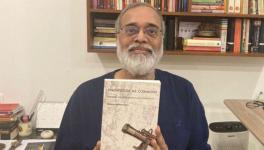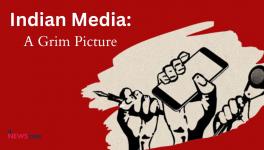A Test Case for Restraint on Media Freedom and Privilege
Sudarshan TV’s alleged “investigative expose” is now stuck in the courts. The judicial proceedings provide a kind of test case that will allow us to weigh the value of placing legitimate restraints on media content that amounts to hate speech against dubious forms of censorship. Sooner or later, the case will have to be reckoned with by the media, preoccupied with other events.
Political contexts determine the legitimacy of any form of state intervention to restrain the freedom of expression. The starting point then is the context in which the Supreme Court and Delhi High Court have been approached for restraints to be placed on the impugned content.
The programme—filmed in nine episodes—was based on the following premises: that a large number of Muslims are being exhorted to take the UPSC exams to enter the government services; they are using unfair means to pass the test, though presumably it does not explain how people can cheat their way through interviews; and, candidates are linked to terror organisations, including the ISIS.
This is not journalism, though, of course, it is a form of electronic “expression”, because it provides no evidence for any of its claims, including the one about an inordinate number of Muslims taking the test, which anyway proves nothing. Making it to government service is a legitimate career aspiration. It especially provides nothing that can be called evidence either in law or, well, journalism, that this is a conspiracy and that Muslims taking the UPSC are linked to terror organisations.
Beyond this, and arising from the above, the programme seems to have the singular intention of vilifying an entire community and the four episodes aired before the judicial stay on telecast have, it appears, successfully achieved their objective.
Before we get to the positions taken by the top court, and, even more pertinently, the Union government, we need to know that India has some pretty stringent laws about “hate speech”, which are invoked pretty often. In fact, provisions on hate speech may easily be held to be much too stringent, capable of being used, and increasingly actually being used, to curb free expression, especially when it dissents against the majoritarian and obscurantist orthodoxies promoted by the authoritarian regime now in power.
Article 295A of the Indian Penal Code is the main legal provision, though there are others. It says: “Whoever, with deliberate and malicious intention of outraging the religious feelings of any class of citizens of India, by words, either spoken or written, or by signs or by visible representations or otherwise, insults or attempts to insult the religion or the religious beliefs of that class, shall be punished…”.
There can be little doubt that Sudarshan TV has vilified an entire community by making completely false and “malicious” claims. Yet, what the people who have approached the judiciary, and tens of millions of other India citizens, are seeking is the prevention of the airing of such vile content, not prosecution.
The Delhi High Court and the Supreme Court have both stayed the telecast of further episodes of this programme. The latter has been cautious about using its powers. Its fundamental position is that it is not a censor and would not like to restrain the media, which would be an “extreme recourse”. At the same time, it could not allow the channel to vilify an entire community, especially because claims had been made which had no factual basis. It has also sought guarantees from the channel about the content of further episodes before reconsidering the stay.
The top court is looking to beef up the regulatory regime, using this opportunity. It has said it will set up a committee of five eminent citizens to recommend standards for the electronic media. Its assessment of the current regulatory framework is not particularly complimentary. It called the National Broadcasting Authority (NBA) toothless and told Solicitor-General Tushar Mehta that the system would have to be given more teeth. The Bench asked the counsel for Sudarshan TV: “What are the consequences if you violate the programme code? Can you be convicted under Section 16 of the Cable Networks Act?”
This question is germane because it refers to the tangled thicket of regulations and regulatory bodies that perform the task of telecast oversight, in respect to various part of the network and process of electronic transmission. It is not hard to wriggle through. Sudarshan TV is not even a member of the NBA.
The Supreme Court’s point is taken. Just as there have to be restraint on the freedom of expression of individual citizens, there must be some for the media in every form. At the same time, imposing bans or persecuting citizens using the available legal and judicial apparatus is not to be countenanced. Fundamental rights are guaranteed constitutionally.
Let us not get into the completely specious arguments made by the channel. The really interesting part of the story is the position taken by the Union government. Mehta has made two important submissions. First, in his opinion, existing rules are good enough to regulate the conduct of television channels. Second, and this sounds like something swirling around in aspic in some surreal dimension, Mehta made an ultra-libertarian case for the media. “Freedom of the journalist is supreme. …It would be disastrous for any democracy to control press.”
Oh really! Mehta should not only be congratulated for his clarity, but he should be made a really independent ombudsman to implement this complete form of media freedom. While he does it, he can reflect on the record of the tinpot regime he now serves. The media in Jammu and Kashmir has been under state attack for over a year. A number of journalists have been detained and charged under draconian legislations. Kashmir has forgotten what this strange thing called the freedom of the media is, what it tastes like.
On the back of this jackboot-trampled field of media rights in Kashmir, India ranks 142 (out of 180) in the World Press Freedom Index of Reporters Without Borders (RSF), just ahead of Pakistan (145) and Bangladesh (151), but way behind Sri Lanka (127), Nepal (112) and Bhutan (67). In 2010, it was 122.
RSF’s report for 2020 notes the throttling of journalism in Kashmir. But it’s not just Kashmir. The government’s attacks on journalistic freedom and the rights of media organisations has been one of the defining features of the Narendra Modi regime, from 2014 till now. Exact numbers of journalists detained and charged under national-security legislation are difficult to find, but they’re turbocharged.
The culture of impunity spawned by the regime in Delhi and those run in the states by the Bharatiya Janata Party (BJP) have seen an alarming rise in the attacks on journalists. A report released at the end of last year recorded over 200 serious attacks on journalists.
These are just the direct attacks. The current regime has insidiously used all its powers to otherwise intimidate and manipulate the media. There are pockets of resistance, but they are getting attenuated. To many, the regime’s handling of the media is reminiscent of the Emergency.
In this situation, the citizenry and the world of the media could well do without any homilies from the government on liberties of any kind. But the judiciary can point us in the direction of a more liberated media, while giving short shrift to fantasists, agents provocateurs and majoritarian fascists who are actually BJP proxies posing as journalists.
It is a good start that Mehta was forced to admit that his claim that the regulatory system is fine is bunk. On 23 September, he told the Supreme Court that the Centre had issued a show-cause notice to the channel over possible violations of the broadcast code. After four episodes had been aired.
The author is a freelance journalist and researcher. The views are personal.
Get the latest reports & analysis with people's perspective on Protests, movements & deep analytical videos, discussions of the current affairs in your Telegram app. Subscribe to NewsClick's Telegram channel & get Real-Time updates on stories, as they get published on our website.
























